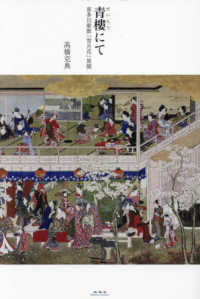Full Description
Fully updated edition of a seminal text in the field providing an in-depth guide to reflection and its real-life application
The Seventh Edition of Becoming a Reflective Practitioner offers an in-depth exploration of reflective practice, bringing the process of guided reflection to life. The book emphasises the importance of person-centred practice aligned with the latest developments in holistic healthcare and features a variety of case studies and real-life scenarios that illustrate the application of reflective practice in clinical settings.
The book is structured into five parts, moving from the concept of reflection and its application in clinical practice to its integration into formal education, narrative representation, and performance. The new edition includes significant updates and expansions on topics such as the development of guidance in reflective practice, as well as the inclusion of new chapters that highlight the reflexive process of guiding practitioners over the course of a year.
Becoming a Reflective Practitioner, Seventh Edition includes information on:
The Six Dialogical Movements and their assimilation within the Model for Structured Reflection (MSR)
Experience, vision, knowing in practice, the prerequisites for reflection, the reality wall, and the movement of reflective learning through understanding, empowerment, and transformation
The nature of guidance and the dynamic process of guidance
Narratives of guiding practitioners within the clinical setting constructed through guided reflection dialogue
Leadership development through establishing a clinical learning culture based on the learning organisation and clinical supervision
Becoming a Reflective Practitioner continues to be an essential resource for students, educators, and practitioners aiming to enhance their reflective practice and achieve their visions of person-centred care.
Contents
Acknowledgements ix
Preface x
Part 1 The Basic Scheme
1 Envisaging Reflection, Reflective Practice and Guided Reflection 3
2 The Six Dialogical Movements Set Within the Model for Structured Reflection 27
3 Writing Self: The First Dialogical Movement 33
4 Engaging the Reflective Spiral: The Second Dialogical Movement 44
5 Framing Insights 62
6 The Nine Reflective Cues to Appreciate 'Knowing the Person' 70
7 Informing Insights Through Dialogue with Theoretical Sources: The Third Dialogical Movement 82
8 Guiding Reflection: The Fourth Dialogical Movement 87
9 Unfolding the Process of Guidance 107
10 Applying the Model for Structured Reflection: 'Passing People by' 119
11 Guiding Alexia to Realising Her Leadership and Vision of Person-centred Practice with Head and Neck Cancer Patients and Families 131
12 Guiding Caitlin to Realise Her Leadership and Vision of Person-centred Practice on a Medical Ward 150
13 Creating the 'Learning Organisation' in Clinical Practice Through Leadership and Clinical Supervision 166
Part 2 Transition into Formal Education
14 The Person-centred Reflective Curriculum 177
15 The Tale of Two Teachers 199
16 Guiding First-year Nursing Students 203
17 Guiding Third-year Nursing Students 213
18 Weaving the Reflexive Narrative: The Fifth Dialogical Movement 225
19 Narrative as Poetry and Art 239
20 Grading Reflexive Narratives 255
Part 3 Student Narratives
21 Awakenings: Guided Reflection as 'Reality Shock' 267
22 Voice as a Metaphor for Transformation 275
23 The Beast and the Star: Resolving Contradictions Within Everyday Practice 282
24 Shifting a Nurse's Attitude to Deliberate Self-harm Patients in an Accident and Emergency Department 290
Part 4 The Performance Turn
25 Jane's Rap: Performing Jane's Journey Towards Shifting Her Attitude to Deliberate Self-harm Patients in an Accident and Emergency Department 311
26 'Wrap-up' 332
Appendix 341
Index 343








